L-(+)-Erythrulose
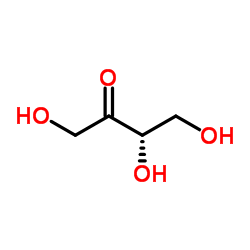
L-(+)-Erythrulose structure
|
Common Name | L-(+)-Erythrulose | ||
|---|---|---|---|---|
| CAS Number | 533-50-6 | Molecular Weight | 120.104 | |
| Density | 1.4±0.1 g/cm3 | Boiling Point | 349.6±27.0 °C at 760 mmHg | |
| Molecular Formula | C4H8O4 | Melting Point | N/A | |
| MSDS | Chinese USA | Flash Point | 179.4±20.2 °C | |
| Name | L-erythrulose |
|---|---|
| Synonym | More Synonyms |
| Density | 1.4±0.1 g/cm3 |
|---|---|
| Boiling Point | 349.6±27.0 °C at 760 mmHg |
| Molecular Formula | C4H8O4 |
| Molecular Weight | 120.104 |
| Flash Point | 179.4±20.2 °C |
| Exact Mass | 120.042259 |
| PSA | 77.76000 |
| LogP | -0.98 |
| Vapour Pressure | 0.0±1.7 mmHg at 25°C |
| Index of Refraction | 1.507 |
|
SECTION 1: Identification of the substance/mixture and of the company/undertaking Product identifiers Product name: L-(+)-Erythrulose REACH No.: A registration number is not available for this substance as the substance or its uses are exempted from registration, the annual tonnage does not require a registration or the registration is envisaged for a later registration deadline.
CAS-No.: 533-50-6 Relevant identified uses of the substance or mixture and uses advised against Identified uses: Laboratory chemicals, Manufacture of substances SECTION 2: Hazards identification Classification of the substance or mixture Not a hazardous substance or mixture according to Regulation (EC) No. 1272/2008. This substance is not classified as dangerous according to Directive 67/548/EEC. Label elements The product does not need to be labelled in accordance with EC directives or respective national laws. Other hazards - none SECTION 3: Composition/information on ingredients Substances Synonyms: L-Glycero-2-tetrulose S-1,3,4-Trihydroxy-2-butanone Formula: C4H8O4 Molecular Weight: 120,10 g/mol CAS-No.: 533-50-6 No components need to be disclosed according to the applicable regulations. SECTION 4: First aid measures Description of first aid measures If inhaled If breathed in, move person into fresh air. If not breathing, give artificial respiration. In case of skin contact Wash off with soap and plenty of water. In case of eye contact Flush eyes with water as a precaution. If swallowed Never give anything by mouth to an unconscious person. Rinse mouth with water. Most important symptoms and effects, both acute and delayed The most important known symptoms and effects are described in the labelling (see section 2.2) and/or in section 11 Indication of any immediate medical attention and special treatment needed no data available SECTION 5: Firefighting measures Extinguishing media Suitable extinguishing media Use water spray, alcohol-resistant foam, dry chemical or carbon dioxide. Special hazards arising from the substance or mixture Carbon oxides Advice for firefighters Wear self contained breathing apparatus for fire fighting if necessary. Further information no data available SECTION 6: Accidental release measures Personal precautions, protective equipment and emergency procedures Avoid breathing vapours, mist or gas. For personal protection see section 8. Environmental precautions Do not let product enter drains. Methods and materials for containment and cleaning up Keep in suitable, closed containers for disposal. Reference to other sections For disposal see section 13. SECTION 7: Handling and storage Precautions for safe handling For precautions see section 2.2. Conditions for safe storage, including any incompatibilities Store in cool place. Keep container tightly closed in a dry and well-ventilated place. Containers which are opened must be carefully resealed and kept upright to prevent leakage. Hygroscopic. Store under inert gas. Specific end use(s) Apart from the uses mentioned in section 1.2 no other specific uses are stipulated SECTION 8: Exposure controls/personal protection Control parameters Components with workplace control parameters Exposure controls Appropriate engineering controls General industrial hygiene practice. Personal protective equipment Eye/face protection Use equipment for eye protection tested and approved under appropriate government standards such as NIOSH (US) or EN 166(EU). Skin protection Handle with gloves. Gloves must be inspected prior to use. Use proper glove removal technique (without touching glove's outer surface) to avoid skin contact with this product. Dispose of contaminated gloves after use in accordance with applicable laws and good laboratory practices. Wash and dry hands. The selected protective gloves have to satisfy the specifications of EU Directive 89/686/EEC and the standard EN 374 derived from it. Body Protection impervious clothing, The type of protective equipment must be selected according to the concentration and amount of the dangerous substance at the specific workplace. Respiratory protection Respiratory protection not required. For nuisance exposures use type OV/AG (US) or type ABEK (EU EN 14387) respirator cartridges. Use respirators and components tested and approved under appropriate government standards such as NIOSH (US) or CEN (EU). Control of environmental exposure Do not let product enter drains. SECTION 9: Physical and chemical properties Information on basic physical and chemical properties a) AppearanceForm: clear, viscous liquid Colour: light yellow b) Odourno data available c) Odour Thresholdno data available d) pHno data available e) Melting point/freezingno data available point f) Initial boiling point and no data available boiling range g) Flash point110 °C - closed cup h) Evapouration rateno data available i) Flammability (solid, gas) no data available j) Upper/lowerno data available flammability or explosive limits k) Vapour pressureno data available l) Vapour densityno data available m) Relative density1,391 g/cm3 n) Water solubilityno data available o) Partition coefficient: n- no data available octanol/water p) Auto-ignitionno data available temperature q) Decompositionno data available temperature r) Viscosityno data available s) Explosive propertiesno data available t) Oxidizing propertiesno data available Other safety information no data available SECTION 10: Stability and reactivity Reactivity no data available Chemical stability Stable under recommended storage conditions. Possibility of hazardous reactions no data available Conditions to avoid no data available Incompatible materials Strong oxidizing agents Hazardous decomposition products Other decomposition products - no data available In the event of fire: see section 5 SECTION 11: Toxicological information Information on toxicological effects Acute toxicity no data available Skin corrosion/irritation no data available Serious eye damage/eye irritation no data available Respiratory or skin sensitisation no data available Germ cell mutagenicity no data available Carcinogenicity IARC:No component of this product present at levels greater than or equal to 0.1% is identified as probable, possible or confirmed human carcinogen by IARC. Reproductive toxicity no data available Specific target organ toxicity - single exposure no data available Specific target organ toxicity - repeated exposure no data available Aspiration hazard no data available Additional Information RTECS: Not available To the best of our knowledge, the chemical, physical, and toxicological properties have not been thoroughly investigated. SECTION 12: Ecological information Toxicity no data available Persistence and degradability no data available Bioaccumulative potential no data available Mobility in soil no data available Results of PBT and vPvB assessment PBT/vPvB assessment not available as chemical safety assessment not required/not conducted Other adverse effects no data available SECTION 13: Disposal considerations Waste treatment methods Product Offer surplus and non-recyclable solutions to a licensed disposal company. Contaminated packaging Dispose of as unused product. SECTION 14: Transport information UN number ADR/RID: -IMDG: -IATA: - UN proper shipping name ADR/RID: Not dangerous goods IMDG: Not dangerous goods IATA:Not dangerous goods Transport hazard class(es) ADR/RID: -IMDG: -IATA: - Packaging group ADR/RID: -IMDG: -IATA: - Environmental hazards ADR/RID: noIMDG Marine pollutant: noIATA: no Special precautions for user no data available SECTION 15 - REGULATORY INFORMATION N/A SECTION 16 - ADDITIONAL INFORMATION N/A |
| Personal Protective Equipment | Eyeshields;Gloves |
|---|---|
| RIDADR | NONH for all modes of transport |
| HS Code | 2914400090 |
| Precursor 8 | |
|---|---|
| DownStream 9 | |
| HS Code | 2914400090 |
|---|---|
| Summary | 2914400090 other ketone-alcohols and ketone-aldehydes。Supervision conditions:None。VAT:17.0%。Tax rebate rate:9.0%。MFN tariff:5.5%。General tariff:30.0% |
|
Double diastereoselection in aldol reactions mediated by dicyclohexylchloroborane between L-erythrulose derivatives and chiral aldehydes. The Felkin-Anh versus Cornforth dichotomy.
J. Org. Chem. 68 , 8577-8582, (2003) Both matched and mismatched diastereoselections have been observed in aldol reactions of the B,B-dicyclohexylboron enolate of a protected l-erythrulose derivative with a range of chiral aldehydes. The... |
|
|
Aldol reactions between L-erythrulose derivatives and chiral alpha-amino and alpha-fluoro aldehydes: competition between Felkin-Anh and Cornforth transition states.
Chemistry 14 , 9240-9254, (2008) Both matched and mismatched diastereoselection have been observed in aldol reactions of a boron enolate of a protected L-erythrulose derivative with several chiral alpha-fluoro and alpha-amino aldehyd... |
|
|
Double diastereoselection in aldol reactions mediated by dicyclohexylchloroborane between chiral aldehydes and a chiral ethyl ketone derived from L-erythrulose. synthesis of a C1-C9 fragment of the structure of the antifungal metabolite soraphen A1alpha.
J. Org. Chem. 70 , 8130-8139, (2005) [Chemical reaction: See text] Both matched and mismatched diastereoselections have been observed in the aldol reactions of a range of chiral aldehydes with the dicyclohexylboron enolate of a chiral et... |
| L-Glycero-2-tetrulose |
| L-glyceraldehyde-3-phosphate |
| glyceraldehyde 3-phosphate dianion |
| calcium L-glycerate dihydrate |
| L-glyceric acid hemicalcium salt |
| L-erythulose |
| L-(+)-Erythrulose |
| (3S)-1,3,4-Trihydroxy-2-butanone |
| Q1YQV1Q &&L or S Form |
| S-1,3,4-Trihydroxy-2-butanone |
| Erythrulose |
| (S)-1,3,4-Trihydroxy-2-butanone |
| GLYCERALDEHYDE 3-PHOSPHATE |
| (3S)-1,3,4-Trihydroxybutan-2-one |
| L-Erythrulose |
| D-Gylcerinaldehyd-3-phosphat |
| Calcium-L-glycerat |
| 2-Butanone, 1,3,4-trihydroxy-, (3S)- |
| D-glyceric acid hemicalcium salt |
| 2-hydroxy-3-oxopropyl phosphate |
 CAS#:141-46-8
CAS#:141-46-8 CAS#:3369-79-7
CAS#:3369-79-7 CAS#:2319-57-5
CAS#:2319-57-5 CAS#:210230-62-9
CAS#:210230-62-9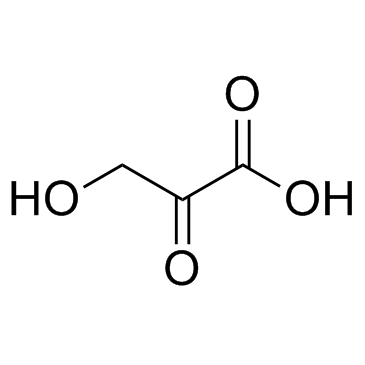 CAS#:1113-60-6
CAS#:1113-60-6 CAS#:50-00-0
CAS#:50-00-0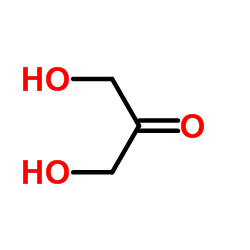 CAS#:96-26-4
CAS#:96-26-4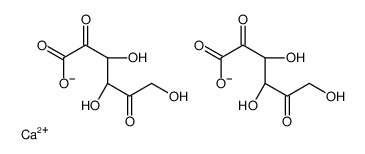 CAS#:24940-63-4
CAS#:24940-63-4 CAS#:64-17-5
CAS#:64-17-5 CAS#:6968-16-7
CAS#:6968-16-7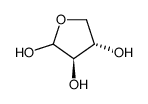 CAS#:95-43-2
CAS#:95-43-2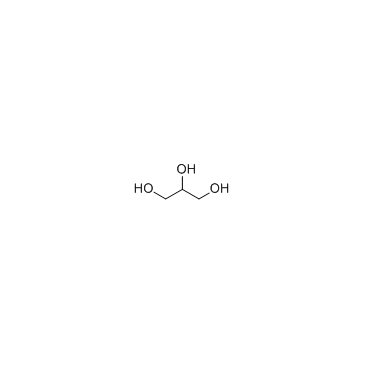 CAS#:56-81-5
CAS#:56-81-5 CAS#:124-38-9
CAS#:124-38-9 CAS#:107-02-8
CAS#:107-02-8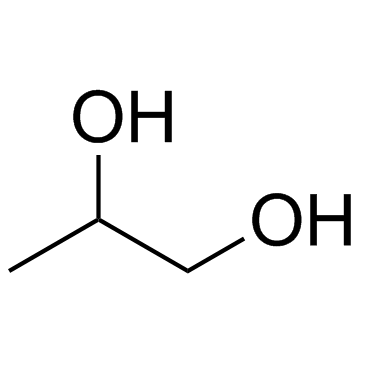 CAS#:57-55-6
CAS#:57-55-6 CAS#:2418-52-2
CAS#:2418-52-2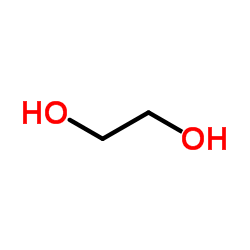 CAS#:107-21-1
CAS#:107-21-1
